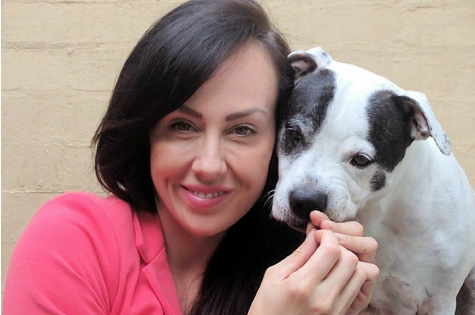A new survey amongst Aussie dog owners confirms something many families have suspected all along – just like ice cream and chocolate topping, kids and dogs are made for each other.
Commissioned by long-lasting paralysis tick and flea treatment Bravecto ® , the survey results 1 reveal the latest insights into the positive, long-lasting effects our four-legged friends have on children and the entire household.
The life lessons children can learn from pet ownership are many. The main benefits dogs provide Aussie children are ranked as companionship (73%), emotional bonding (67%), having fun (66%) and learning responsibility (61%). Dogs also provide a range of unique comforts to kids – playing games comes out top (53%), followed by snuggling on the couch (41%) and going to the park (39%).
A dog is touted as ‘man’s best friend’, but household pets are often a child’s best friend too. The Bravecto survey reveals a family dog has a huge positive impact on the emotional wellbeing of children, with 85 per cent feeling happy, 67 per cent feeling loved, and 64 per cent feeling safe when their four-legged friend is close by.
Interestingly, children aged 6 to 12 years of age are more likely to feel loved (75%) and those aged 13 to 18 years of age are more likely to feel content (62%).
Laura V, Australia’s most well-loved animal behaviourist, believes that this bond allows dogs to feel these things too, creating harmony in the home.
“The purest love of all is the love between a dog and child. Dogs teach children such invaluable lessons in life and ultimately assist in raising them to be good, empathetic people,” Laura comments.
Children benefit from dog ownership in terms of responsibility, a great stepping stone for the demands of adult life. The Bravecto survey indicates Aussie kids don’t just ‘pet and forget’; 71 per cent of Aussie children take responsibility for feeding their dog, while 65 per cent either took care of or participated in the walking and exercising of their pet. To the delight of many Aussie parents, nearly half of all children (46%) cleaned up the dog poo…a thankless task, loved by none!
Laura V adds: “Dogs are the best teachers! No matter what our age, dogs teach us about kindness, responsibility, trust and respect. If we let them, they make us better people.”
The essential art of compassion can also be nurtured through pet ownership, providing children with many priceless gifts along the way.
The Bravecto survey clearly points to the relationship between dogs and children as being one of both compassion and companionship. Over half (58%) of Aussie parents feel the longer a pooch is in the household, the stronger the bond is between the dog and a child. Conversely, parents believe their child would feel lonely (47%), bored (38%) and sad (33%) without their four-legged companion.
Laura V believes caring for a dog can help children’s development both emotionally and physically: “The Bravecto survey shows children often adopt the task of caring for their dog which teaches them how to care for others.”
Are Aussie kids and their dogs a match made in heaven? If the research results are anything to go by, quite possibly.
About Bravecto
Bravecto is the only oral chew to deliver 3 months flea and paralysis tick protection for dogs in a single dose. It’s a tasty oral chew that dogs love, it won’t wash or rub off, and there’s no mess to administer or liquids to spill or transfer.
With Bravecto, your family can focus on loving life with your dog, knowing they are protected and leaving everyone to worry about more important things, like where is the lead?
To find out more visit www.bravecto.com.au or join our awesome online community of passionate dog owners on Facebook [BravectoAU] and Instagram [BravectoAU].
References
1 The Bravecto Dogs & Children Survey was completed in April 2017 with an online permission-based panel of owners of dogs in Queensland, NSW and Victoria. Quotas were used for state and gender so that the results can projected to the full population of dog owners in the eastern states. The sample size was 507, giving a confidence level of ± 4.3% at the 95% confidence interval.








 Agree (0)
Agree (0) Disagree (
Disagree (









__small.png)










